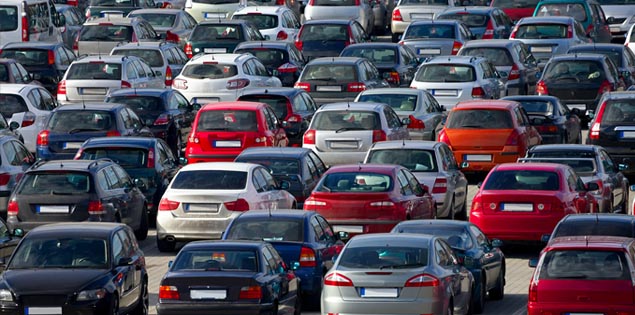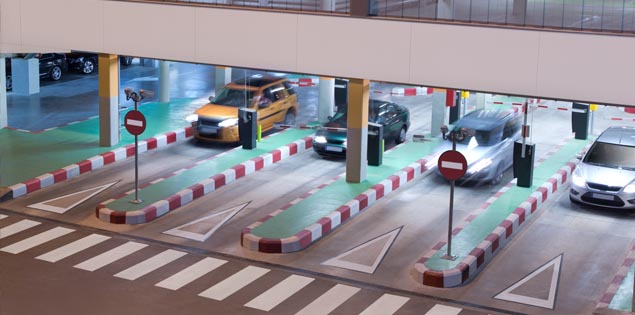
People quickly notice when a community has a parking problem. And they don’t stay quiet.
It’s no wonder. Struggling to find a parking space hits their wallets, messes with their schedules and could potentially spoil their once-positive opinions about a neighborhood.
But new parking lots and garages don’t come cheaply or easily to municipalities looking to solve the problem. What they often overlook, however, is that they already have the parking they need. Retrofitting existing facilities with parking technology empowers communities to tackle parking issues while saving millions of dollars in construction costs.
How Building New Parking Creates New Headaches

The average price of building a 145,000-square-foot parking garage is almost $8.6 million. That cost jumps higher in densely-populated suburbs and cities where land is especially expensive. In fact, a single parking space could cost up to $45,000 just to build.
Finding available space to build a garage is a challenge in itself. That’s why land is often among the most expensive components of building a garage or lot. And while it might be tempting to add parking underground, digging causes prices to skyrocket. In Boston, for instance, the cost for a single subterranean parking space is roughly $31,000.
Financing such a project is also difficult. Poor market conditions can turn funders away and drive down the number of bids received by a municipality. The swings of the markets can negatively affect a proposed parking garage’s funding, quality and construction timeline, which could become root reasons for greater problems down the line.
Construction of a parking deck typically takes months and sometimes years. A 625-space garage took Chicago 18 months to build. Motorists, businesses and residents are likely to feel each minute of that process, as the work affects their daily routines.
Perhaps most concerning, new parking garages are known to go unused. Such stories have cropped up across the country, from empty parking garages outside Yankee Stadium that lost $31.2 million last year to a $20 million bust in Honolulu, Hawaii. As the Project for Public Spaces notes, some municipalities come to find that “the growing number of surface lots and parking structures has choked out the very reason people drove there in the first place.”
How New Technology Can Improve Parking
Yet most municipalities have enough parking – they just need to utilize it correctly. Rather than pouring millions of dollars into a new garage, they can install technologies that identify available spaces to make existing parking garages more efficient and driver-friendly.
Tools like level guidance systems, for instance, use magnetic loop detectors installed at the entrance of each floor to monitor the number of vehicles entering and exiting. Simultaneously, real-time LED signs alert drivers to levels with open parking spaces. Parking guidance systems additionally use sensors above each parking space and green and red lights to guide drivers directly to the open spots.
These simple steps actively help drivers make the most out of every space the municipality has available. Drivers don’t give up and turn around, like more than half of all motorists have admitted to doing, when they’re given immediate information on available spaces.
Automated parking systems also relieve the burden on the municipal bank account. As opposed to communities that opt to build standard parking decks, owners of retrofitted garages don’t need to hire additional employees. What’s more, automation may even eliminate or reduce the necessity of some existing jobs.
These systems can be set up quickly and easily. Parking garages may also remain open during installation. That destroys the potential for disruption to the businesses, residents and visitors who rely on these facilities for income, shopping and pleasure.
By opting to use new parking systems, municipalities and others show that they make decisions with the future in mind. Why continue to walk down failed paths when high-tech, budget-friendly options exist?
Parking doesn’t need to be a problem, and solving a community’s parking issue doesn’t need to be a pain.
